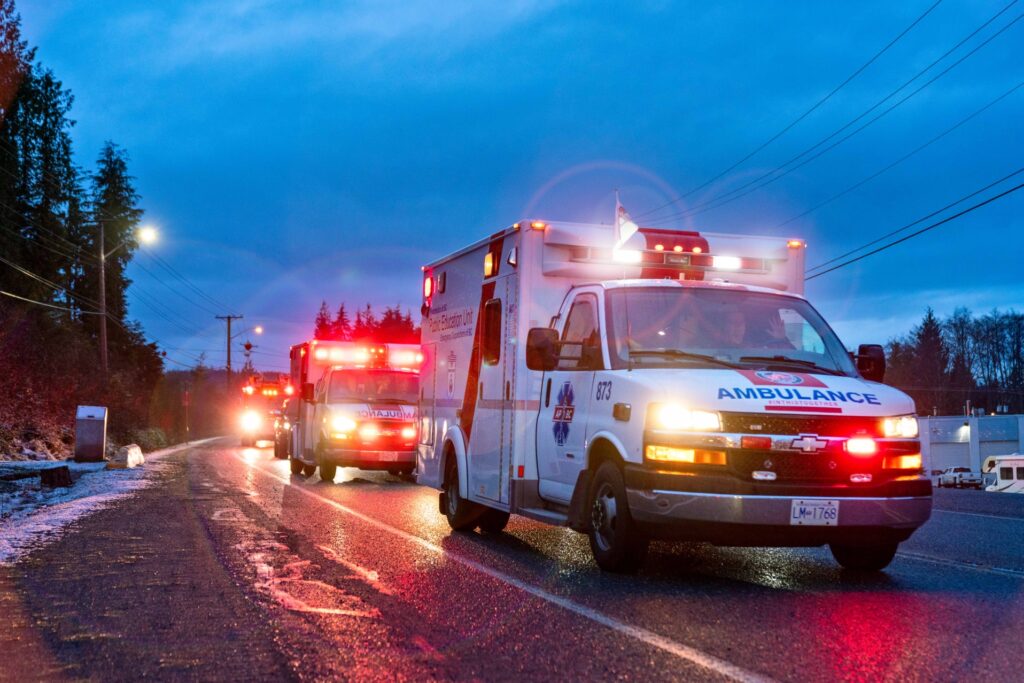As I prepare to return to school, I cannot help but reflect on the Quebec student strikes, this year marking the 10th anniversary of the Maple Spring. While the strikes were in many ways successful, students across the country are still deep in the throes of extortionate student loan debt due to the ever-climbing tuition cost. Not only do university students face a deluge of tuition fees and debt for pursuing an academic degree, but vocational students like myself find themselves struggling to pay the excessive costs of education. As a full-time primary care paramedic student in Vancouver, I am paying nearly $7,000 in tuition fees for a mere eight and a half months, and an additional $730 for a single textbook. You’d be mistaken to think that each of those eight months are dedicated to learning in the classroom — oh no, comrade! Three and a half of those months are spent doing an unpaid practicum.
The initial ambulance placement shifts are observation shifts. The later placements, however, will entail extensive periods of unpaid labour. The school tries to place you at a station or hospital nearby, but if you don’t have 24/7 open availability and the ability to easily get to a station or hospital in a different city, you may not see your certificate or have a future as a paramedic in this province. Practicums are a fantastic way to gain hands-on experience and observe seasoned workers in the field, but it is nothing short of exploitative and unethical to refuse to compensate the student for their time and labour. When students are asked to have 24/7 open availability for practice education placement, it raises the questions: how will I afford to survive in one of the most expensive cities in the country? How will I pay my criminally overpriced rent every single month? How can this province adequately train healthcare professionals when the cost of education and housing is so strikingly high?
The struggle doesn’t end upon graduating, either. New hires for BC Emergency Health Services (BCEHS) typically do not get placed in their preferred areas, often leaving them no choice but to travel long distances to work their shifts. At just $2 an hour in standby pay, workers stationed in rural areas will frequently spend more on their commute to work than they will make in their entire shift — especially the night shift. It is not uncommon for some paramedics to have a second job in order to survive, often causing burnout when paired with the conditions and nature of the job in paramedicine, leading many providers to quit or move to a more desirable career in the fire department. As is sometimes said by workers in the industry, “BCEHS: the best care $2 an hour gets you!”
It is well known that it can often take a long time before an ambulance will arrive on scene, which is obviously detrimental to the health of the patient. The COVID-19 pandemic has only highlighted these and other weaknesses in our desperately underfunded healthcare system, which continues to be quietly eroded through P3s, or public–private partnerships, contracting out public healthcare to private, for-profit service providers one piece at a time. It has been demonstrated that private contractors are less efficient and cost taxpayers more.
Climate change has also added strain onto the overburdened healthcare system, with numerous preventable deaths of the over 600 reported during the B.C. “heat dome” of 2021 directly correlating to a shortage of paramedics — which has only worsened since then. It should come as little surprise that the B.C. coroner’s report indicated that the vast majority of those who died that summer “lived in socially or materially deprived neighbourhoods” compared with the general population.
Experiencing feelings of fear and anger when you are waiting for what feels like forever in a very distressing situation is natural and entirely understandable. But let us be clear, this predicament is a byproduct of capitalism and a result of a deliberate policy of austerity with respect to our public healthcare, and indeed our education system as well. It is undeniable that the fight for free education is not only in the interests of students, but affects anybody who is concerned about the quality and integrity of our healthcare system.
On August 25 of this year, for example, an eight-month-old infant suffered a fatal cardiac arrest in Barriere while waiting for an ambulance to arrive. BC Emergency Health Services said that the closest available ambulance had been dispatched, but the union representing B.C. paramedics, the Ambulance Paramedics of BC (APBC) stated that the local Barriere ambulance crews were assisting with calls out of town, which resulted in them being too far away to adequately respond to the baby’s medical emergency. Less than a week prior, APBC stated that “every corner of B.C. is suffering from unprecedented staffing, recruitment, and retention issues. We do not have enough paramedics and dispatchers to meet the call volume and demand for service. We have never seen our ability to respond to patients in their time of need be in such peril.” Union president Troy Clifford indicated earlier that month that the province needed to train and hire at least 1,000 additional paramedics to keep up with current demand. Similarly, the BC Nurses’ Union indicated in May of 2021 that there were 4,300 vacant positions left unfilled. Between high costs of education and of living, low wages, and what studies have shown are rapidly deteriorating mental health conditions for workers in these fields, there are serious challenges that can and must be addressed in order to put an end to this crisis.
Clearly, we need more paramedics and medical professionals. It’s well past time that education in these fields be made free of charge, and that wages be made livable. If you or a loved one experiences a medical emergency, don’t you want to know that there will be someone there to answer the call?

